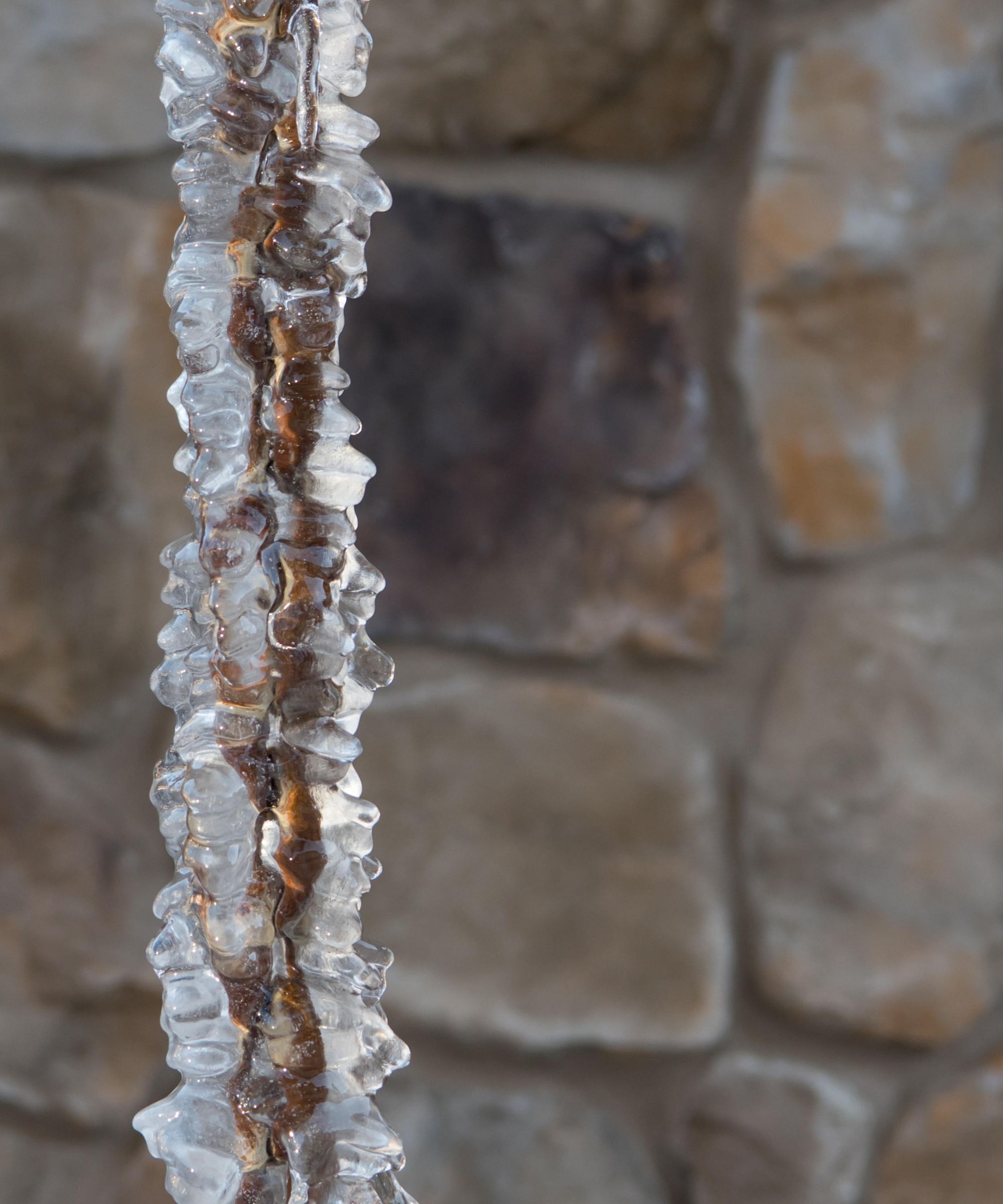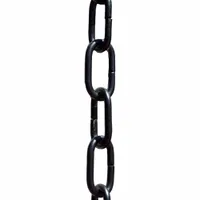What happens to rain chains in winter? Here's how to pick the best option for a cold climate
Find out what happens to rain chains in winter and discover the best types of rain chains for cold climates with this easy guide


Although set up for rain, winter can sometimes prove to be a difficult time for rain chains – especially if you live in a cold climate. Understanding what happens to rain chains in winter will help to mitigate serious problems before they arise.
Although the debate of whether rain chains are better than downspouts is contested, it is hard to deny that they make wonderful garden additions that can be used for both diverting water and collecting rainwater for use on plants and indoors.
There are lots of good reasons to install a rain chain, however, as the weather quickly drops below freezing in many parts of the world in winter, it is important to know what to look out for on a rain chain, or risk damaged roofs and broken chains come the summer.
Here is what happens to rain chains in winter, and how you can pick a suitable chain for your cold climate abode.
What happens to rain chains in winter?

Rain chains typically hold up very well in the winter months and can usually be used as they are in spring and summer with little intervention, especially in milder climates. Problems usually only arise in much colder climates where frosts, snow, and ice can quickly leave owners wondering why their rain chain is not working.
'Given that rain chains are made from metal, they are particularly susceptible to freezing once the weather is cold enough in winter,' explains Rachel Crow, garden editor for Homes & Gardens. 'While this is often not too much cause for concern, a frozen rain chain can become too heavy for its support and tear down.
'If the rain chain is fastened to a particularly weak or flimsy roof or porch beam it could even damage the structure too,' Rachel warns.
Design expertise in your inbox – from inspiring decorating ideas and beautiful celebrity homes to practical gardening advice and shopping round-ups.
Another common problem in the winter months is high winds, especially if you live in a colder climate or in an exposed area. In very windy conditions, rain chains (despite their weight) can easily swing in a way more akin to rope. One way to prevent this is to secure the chain at the bottom as well as at the top using an attachment loop embedded either into the ground or fixed to the base of your water butt if you collect rainwater.
How to protect your rain chain from freezing in winter

'One of the best ways to prevent a rain chain from freezing is to take it down and put it in storage over winter,' Rachel Crow suggests, 'although if this is not possible for you, it may be worth considering de-icers or heat tape to protect your chain from frost.'
Heat tape such as this on Amazon is a protected cable that can be wound around pipes and rain chains and act as a radiator to prevent water from freezing. One downside to heat tape is the need for an electricity source which may prove difficult if your rain chain is in an awkward position on your house.
A standard de-icer such as this liquid ice melt (also on Amazon) can be used on rain chains to help keep the ice build-up to a minimum over the winter months. This may need reapplying every few days or so but is often more convenient than trying to power heat tape. 'If you do use de-icer to maintain your rain chain over winter make sure to discard any collected water,' Rachel reminds, 'de-icer is toxic and not suitable for drinking or watering plants.'
How to pick a rain chain for cold climates

If you are planning to buy a rain chain and live in a cold climate then it is a good idea to educate yourself about which rain chains are best and the ones you should avoid to prevent issues down the line. There are often a few chains that may be better for your circumstances than others.
'Avoid rain chains that are overly decorative, such as chains with cups and detailed designs,' Rachel recommends. 'These types of chains look beautiful in summer but they can quickly break or deform as ice forms and water expands.
'Instead, opt for a more plain-looking chain. While these are not as aesthetically pleasing to look at, large link chains, stainless steel chains, and cast iron chains are more able to withstand changing temperatures.'
Monarch Rain Chains Traditional Chain – $49.95 at Amazon
This downspout alternative is assembled by skilled artisans to provide long-term durability and stability. Artistic and functional in design, the rain chain is made of heavy-duty aluminum and is rust-resistant.
Do rain chains clog?
Rain chains can 'clog' in a unique way. While they do not get blocked with debris like a traditional gutter and downspout, the chain can be subject to a build-up of deposits from the minerals in rainwater. Because of this, it is advised to clean your rain chain at least once annually to maintain proper working order.
Do rain chains rust?
Whether or not rain chains rust is dependent on the type of material used to make it. Chains made from aluminum are the least susceptible to rust as the metal offers the most resistance to corrosion.
Many rain chains now come coated in a powder finish which offers special protection against corrosion, however, over the years, any chain may begin to lose its pristine appearance and have some slight signs of rust.

Chiana has been at Homes & Gardens for two years and is our resident 'queen' of non-toxic living. She spends most of her time producing content for the Solved section of the website, helping readers get the most out of their homes through clever decluttering, cleaning, and tidying tips. She was named one of Fixr's top home improvement journalists in 2024.
